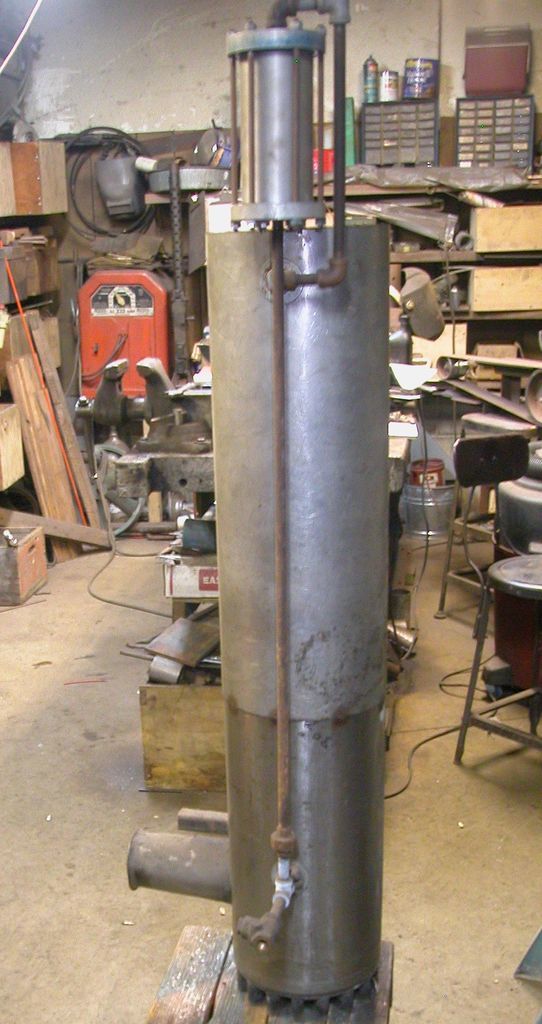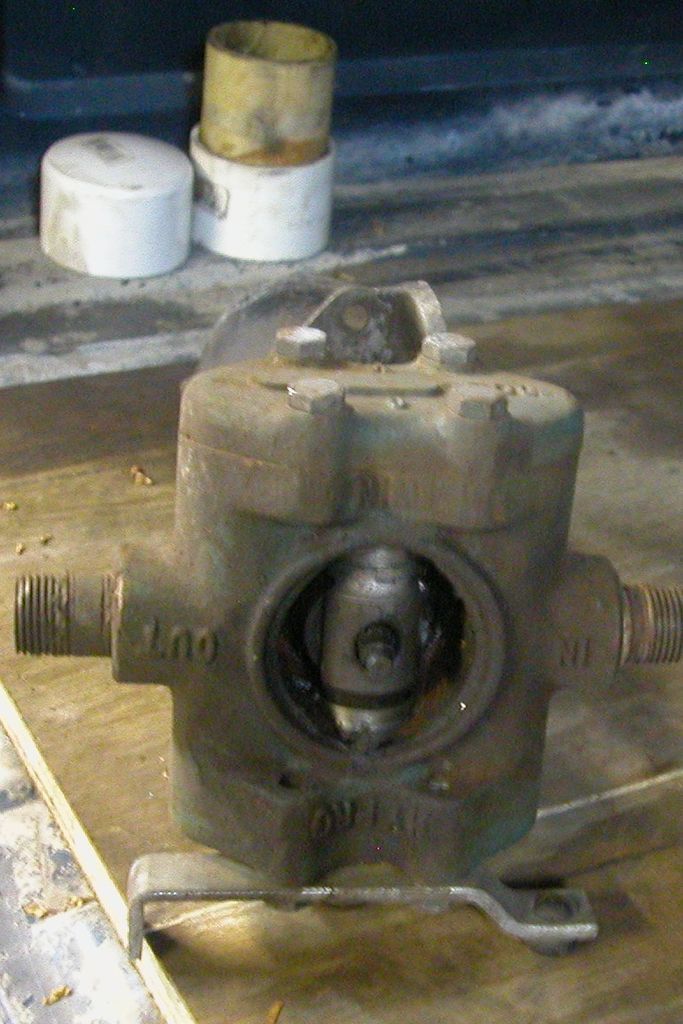Hello MarkG
As much as I have wanted to like steam there are three very serious mistakes you are making in your premises.
The First and most serious is not keeping up with currently developed and offered small IC piston engine based commercially offered home size CHP systems. 5-6 different systems out there in the World with at least 50,000 installed and in actual use system. Look at this one with 2.5kW/el sizing:
www.marathonengine.com/index.html
Follow all of the links and downloads and you will find a fully US/Canadian/EU/California certified system. Water-cooled slant cylinder gasious engine with a PM direct driven genrator, incorperated inverter/charger and full intergration support. In home installable and insurable.
They “only” quote 25% fuel BTU to electrical out efficiency but with the pumped engine coolant heat and an intergrated SS exhaust heat exchanger then have 65% input fuel BTU (by the engine) heated water energy recovery available = 90% fuel use cycle efficiency. IF you use the heats Sensibly. House space, domestic HW, shops, greenhouse, hotframe growers, aqua-farming, dog house, water troughs, ect. You DID say off grid - lots of sensible uses for heats. Ha! A person could hot pack/pressure can food with IC engine heat in the summer! 210-240F at 7.5-15 PSI is just the ticket.
Another system in deployment smaller at 1kW/el rated is based around Honda’s new Atkinson cycle engine and marketed under the "Freewatt’ and “Ecowill” names in the US and Japan.
These are all spec. methane and propane fueled based. Easily converted to woodgas or charcoal gas fueling. As already on the market, with all developement and certifications done MUCH better for a DIY to emulating/reverse engineering with off the shelf componets than any new steam system requiring from the ground up developing.
Now to woodgas fuel burner heating for your steam . . .
Without the working IC piston engine suck drawing the gasifer you can figure easily 250 watts of now continous blower power needed then for the gasifer hearth blowing or sucking per every hp/kW of engine shaft power you want to use This is real world expereinces I am stating. Continous duty blowers cost bucks. They Wear out. Need to be a “critical” pre-bought spare. And just like any batteries costs Blower use needs to be calculated as an expendable.
Second premise mistake you are making is saying that the DIY’s here would be capable of 500F/600PSI building and fabricating. The guys with lathes, casting expereince and/or good welding and milling capabilty would be 350F/150PSI steam capable for sure. But your 500F/600PSI is a quantum leap up from that. And very few are going to be willing to commit to a 1,000+ hour multiphased yet to be proven concept project. Low Temperature/Pressure puts you back into that single diget effinecies at the expansion engine. O.K.: up to 16% on the engine IF you go with a triple cylinder compound expansion engine. (Reliable Steam Co.) Or even a bit more efficnecy conceded with your more complex to valve/route and insulate proposal at again this higher not DIY capable 500/600 T/P base.
Why would anyone here want to commit to an experimental 1,000 hour project at new to them continuous high temeratures and pressures when in literally one weekend they could be Gillmore charcoal gasifing, pre-existing IC piston engine running and generating? Or in just a few hundred hours at the most of no machining; just grind cutting, MIG/sick welding, be up and woodgas IC piston engine running and generating for electrical and heat? GEK, Vulcan, S.Abadessa ALL offer base woodgasifier kits to build up off of. ArvidO will sell a base developed woodgasifier hearth to small engine supply build around. These are all at an easy atmopheric pressure +/- 10%.
Lots of us here will help fellows make up thier own designs for their own conditions and capabilites.
Give them hours and hours of two-way expereinced operator running advices with woodgas supplied IC engine running.
Steam they will be hung out there A-L-L on their own.
Take just one comparable componet: a shut off valve. Steam is going to require a metal, pressure rated, corrosion resistant valves. The WK wood gasifer system plan calls for a packge of three common tennis valves for air shut offs!
Third assumed premise is the same as most who’ve never actually woodfueled gasified made IS the fuel wood itself.
So join the crowd with this one. Fellows actually annualy heating with wood it is easy to tell them that woodfueled gasifier or steam generating for now your home electrical power ARE you willing now to source, prep and supply for an individual off-grid home now a minimun of TWICE the amount wood you normally use?? When I say CORDS and TONS of wood fuel they understand. Guys used to thinking in easy dense spec “fuel” gallons/therms/gasious cubic feet really haven’t got a clue what woodfueling will really mean in thier daily life. Same with home eggs and chickens.
The interest I used to have for personal use home power steam was the ability to be able to use the same prepped stove wood that I use for home/shop/greenhouse heating. Cut to 18" “cordwood” split pieces. Searching out; finding; and then traveling to look at actual in use small steam systems showed that most were converted to petroleum burners to avoid the hourly needed restoking with bulk cord wood. Yes you may be able to make a small footprint monotube steam generator but it will NOT remain small and then have an actual useable bulk fuel wood hearth area in it! And Especially they burner converted to get the needed direct heat produced to steam generated CONTROL that monotube types need. Well proven now that only diesel/kerosene burners or even commercial fuel wood pellets burners give can give this finite heat control. Bulk wood burns do not change rates rapidly at all. Very slow to change. WHY most of the oldtime bulk wood steam gnerators were fire tube - with large, large steam chambers for the pre-produced steam reserve power. They were the go BIG BOOM ones!
So out the window for all of that “steam advantage” ballyhooed consept of fueling with anything burnable, scrap, scrounged, found. Wrong!.
Buying out of pocket with post taxed dollars spec. grade petrol fuels I buy no road taxed farm diesel as the best regional BTU fuel value. Then run that in a far, far simpler actual diesel engines. I still have two of those. Turn key. Fuel it up. Change the oil, coolant and battery every so often.
To actually usable woodgas fuel you do need to MORE process the raw fuel wood down from length cut 16", 18" or best of furnaces actual 4 FOOT cordwood lengths or pallet boards.
The least energy intensive way to do this is to chunk down to the gasifier needed chunk sizing. Easy then to batch fuel small systems with chunked woodfuel every 2-4 hours. Two spaced daily cycles and you have enough Off-Grid home daily power and heat produced for 24 hours. Yes batteries and thermal storage needed.
If you are Off-Grid located 200+ days a year of useable solar then PV should have been your initial self-power investment. THEN off-grid you’d already have the batteries and inverter/converter. THEN for the 100-150 days a year of no-low solar you would also already have the back up IC engine-generator also. Most stationary home woodgasing interrested/needing have already made these initial investments and woodfuel now is the way to convert from bought out fuels to home grown fuels.
Too raw wood chip, classify sort; or, grind and pelletize densify to be able to then auger in woodbased fuel takes a LOT more woodfuel prepping energy imputs. Only fair to quote these mechanical driven processing energys out of the original woodfuel energy system input in your fuel to shaft effinecy calculations. Otherwise you are hidden subsidizing. THESE fuel forms are what is needed for a more continous ran grid tied systems or your continuous ran proposed steam 1kW system. This chipping and grinding/pelletizing WILL cost you a high single diget bite out of your system energy effinency total.
You did say Off-Grid and personal use. Off-grid the most important design criteria is not absolute fuel effincy but Keep It Simple to operate, maintain and repair. These have to be able to be done by more than just one person who did the developing and system building. KISS rules Off-Gridding.
Regards
Steve Unruh






